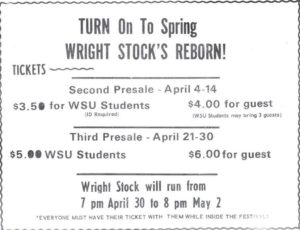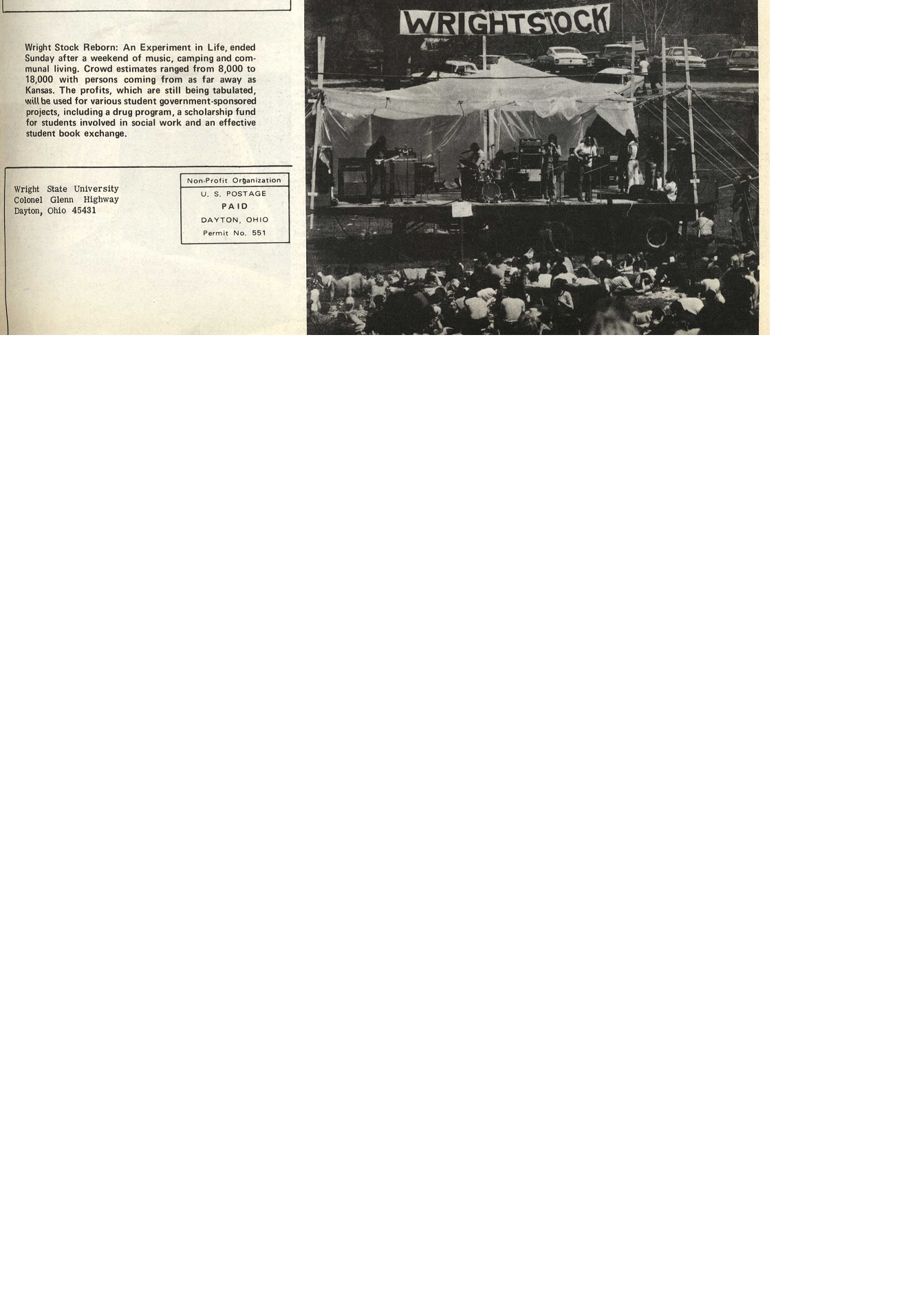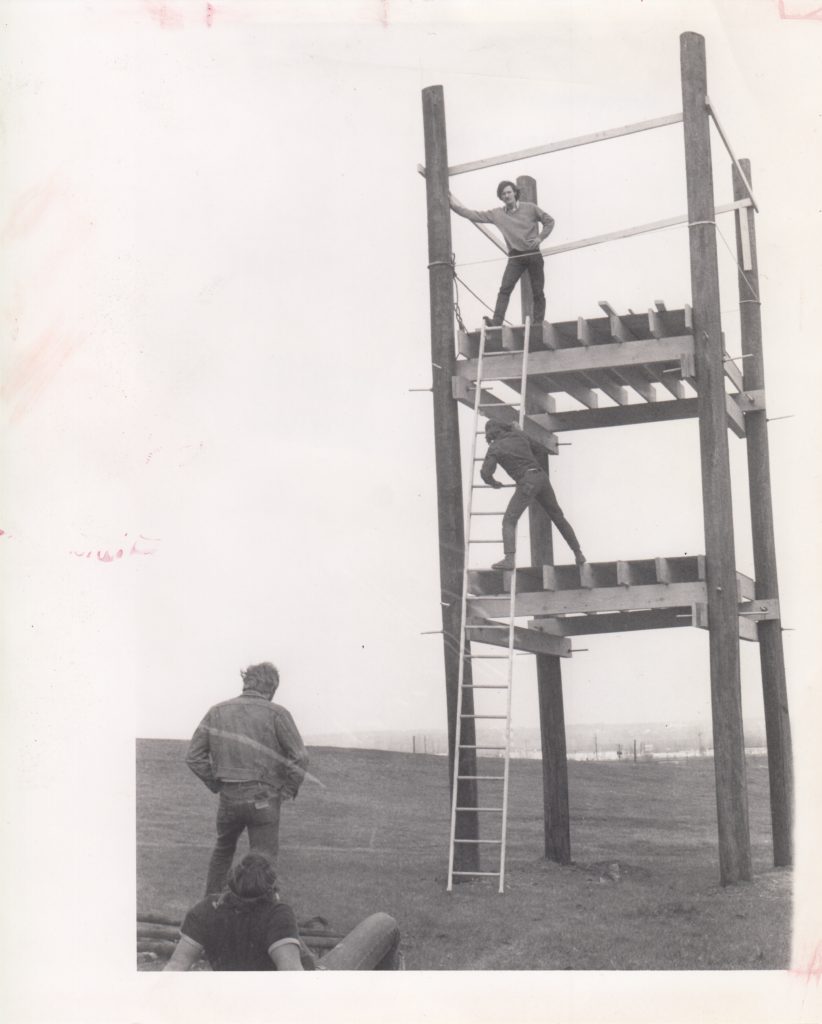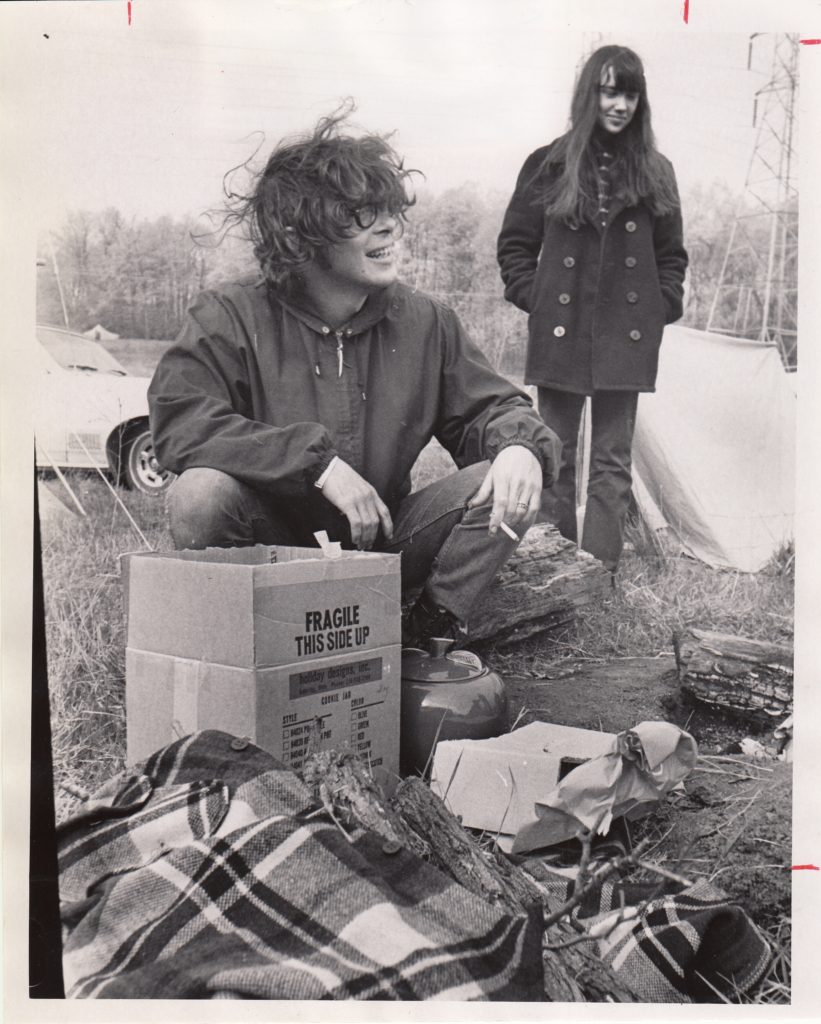Over the years I’ve heard many references to an infamous event in WSU’s early history, namely the “Wrightstock” festival. I had never been able, however, to find much documentation at all about this in the University Archives. Much of what I knew was based on rumor and second hand stories. But after a couple of coincidental discoveries while researching other topics, I began to dig a little deeper, utilizing back issues of The Guardian and The Dayton Daily News. I was able to slowly begin separating fact from fiction about what we knew, or thought we knew, about Wrightstock.
The first thing I discovered was the event was not infamous at all. It was in fact an official university event, organized by the WSU Student Government. In May of 1970, Student Government organized the first WSU music festival, inviting a variety of bands from Dayton and the surrounding area to perform. The initial purpose was publicity for the young university and to attract young people out to campus to see what it was all about. The event, nicknamed “Wrightstock” by many of the attendees, was held on Achilles Hill, the large hill on the backside of the current Nutter Center property, and it was a big success. The following year the Student Government tried to build on that success by expanding the event to a three-day, 18 band outdoor music festival, officially titled “Wrightstock Reborn: The Festival of Life”. Proceeds from the festival were to be used to help fund a variety of student initiatives, including community service scholarships, a campus rescue unit, a drug abuse information program, and a book co-op, among other things.
It appears the event was a rather convincing emulation “with a wink” to the original Woodstock, right down to the Star Spangled Banner guitar solo, (which reportedly was AWFUL). The event began at 10am on Friday, April 30, running for three full days, ending at 8pm on Sunday, May 2. By all accounts, it was a giant, messy success. While we can’t confirm how many attendees there were, Student Government’s report to the Academic Council put the numbers at “35,000 over the course of the weekend, with a maximum of 8,000 at one time”. It also appears, however, that the event was a victim of its own success. Many complaints began surfacing after the conclusion of the event about the massive effort it took to organize, relegating Student Council to “a large group of concert promoters and event organizers”. There were large cost overruns, due largely to uncollected ticket sales: “Nearly 7/8 of the people got in free”. It was extremely unpopular with local residents, due to three days of loud music, large crowds, and the massive mess that was left behind. Billed as a “back to nature, earth-friendly event”, the clean up effort of Achilles Hill took many weeks and was badly criticized. In the end, it became fodder for Student Council candidates and the opinion pages in the Guardian, and not worth the associated risks for Council to continue.
While it lasted, though, it sure sounded like a pretty good time.
An ad for the Wrightstock Music Festival (The Guardian, April 7, 1971)
A weekend pass to Wrightstock (University Small Collections/Newman Center)
Preparing for the 18 band music festival on Achilles Hill (Dayton Daily News, April 29, 1971)
Band stand being constructed (Dayton Daily News, May 1, 1971)
Festival goers at the Wrightstock Campsite (Dayton Daily News, May 2, 1971)
Band performing at Wrightstock Music Festival (University Times, May 7, 1971)




8 Responses to WRIGHTSTOCK: The Festival of Life